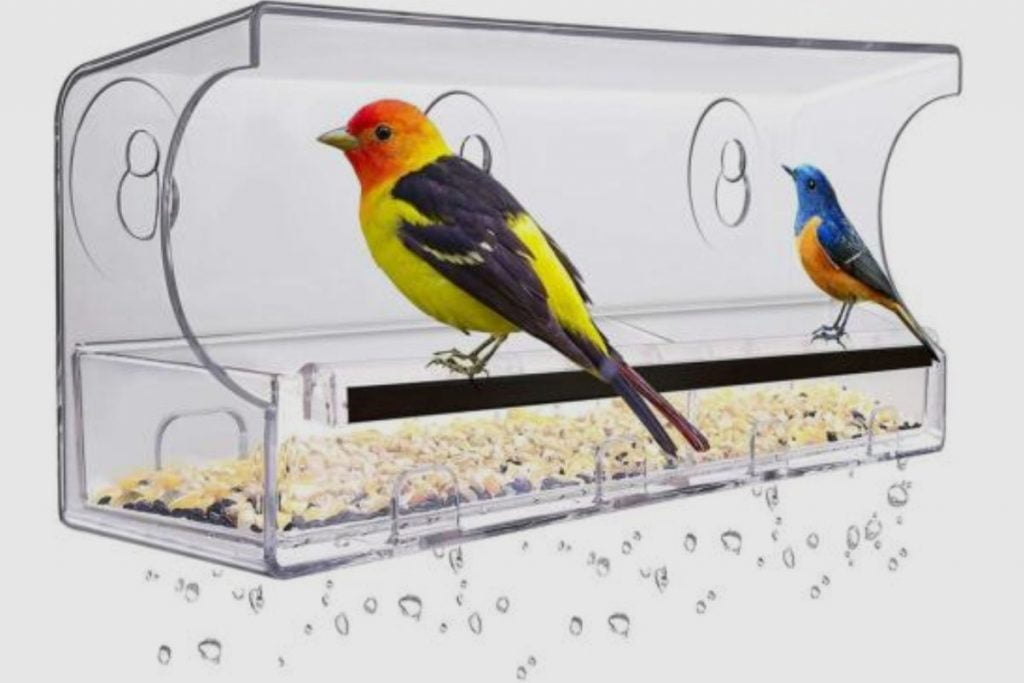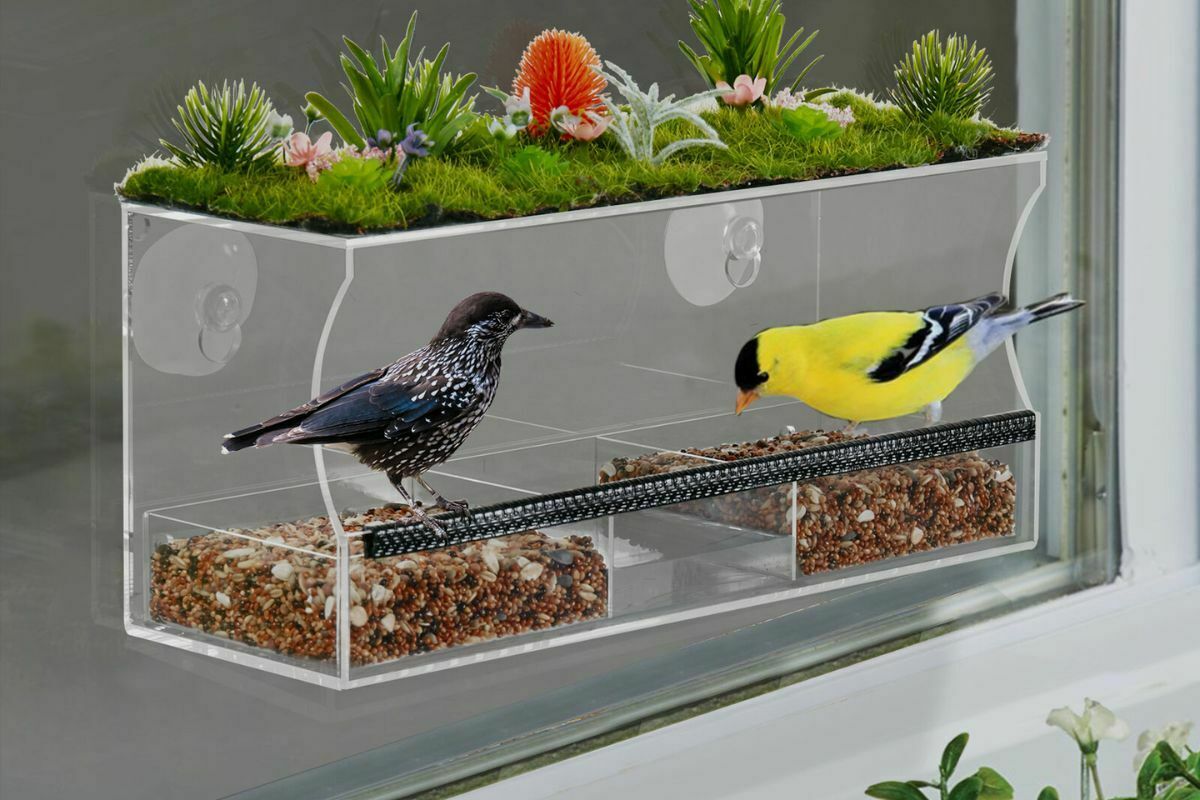Do birds make use of window feeders? Yes, birds do use window feeders! Certain bird species are particularly attracted to window feeders, with their visitation frequency depending largely on specific factors, such as the type of feeder you select, the kind of food you offer, and the population of birds in your vicinity.
To give you better clarity, window feeders come in various designs, each tailored for specific bird species. So, your choice of feeder can significantly affect which birds come to visit. Equally critical is the type of food you offer.
Each bird species has a unique dietary preference, meaning the right food can entice a wider array of birds to your window feeder.
In this post, we delve deeper into the nuances of attracting birds to your window feeder. We’ll explore various feeder types, dive into the preferred diets of different bird species, and offer insightful tips on how to better understand your local bird population. We aim to equip you with all the knowledge you need to turn your window into a vibrant hub of bird activity. Stay tuned as we embark on this feathered journey together.

What type of window feeders are available?
There are several different types of window feeders available. The most common type is a suction cup window feeder, which is attached directly to the glass using suction cups. These feeders usually come in either a rectangular or circular shape and offer a platform for birds to perch and feed.
Another type is the hanging window feeder, which hangs outside your window. These feeders have a tray or dish that provides a landing area for birds to feed.
There are also window box feeders, which are similar to hanging window feeders, but they are mounted in a box attached to your window. These types of feeders offer more protection from the elements, as well as more space for birds to land on and feed.

Factors Affecting Bird Usage of Window Feeders
Several factors can influence whether birds will use a window feeder:
- Feeder placement: The height of the feeder, proximity to windows, and nearby vegetation all play a role in attracting birds. Ideally, place the feeder at least 5 feet above the ground and close enough to a window for easy viewing. Nearby trees or shrubs can provide shelter and a place for birds to perch while visiting the feeder.
- Food selection: Different bird species have different dietary preferences, so offering a variety of food types will attract a diverse range of birds. Seeds, insects, suet, and nectar are popular choices.
- Bird species in the area: It’s important to understand the local bird population in your area, as this will also influence the types of birds you can attract to your window feeder. Tailoring your feeder and food choices to the local bird species increases the probability of regular bird visits.
- Safety concerns: Birds may avoid window feeders if they feel threatened by predators, such as cats or larger birds, or if they are at risk of colliding with the window.
What food should I put in my window feeder?
The type of food you offer will depend on the species of birds you are hoping to attract to your window feeder. In general, birdseed mixes are a great choice for most backyard birds.
If you want to attract specific species, such as cardinals or finches, you will need to provide the food they prefer. You can purchase special birdseed mixes designed for these birds, or you can create your own mix by combining different types of seeds and nuts.
You can also offer other types of bird food, such as suet cakes, mealworms, fruit slices, and cracked corn. If you’re unsure which type of food is best for the birds in your area, you can contact your local wildlife centre for advice.
Which birds are likely to use window feeders?
The exact species of birds that use window feeders will vary depending on where you live and what type of food you offer.
Some common backyard species that may visit your window feeder include the following:
- Cardinals,
- Doves,
- Finches,
- Chickadees,
- Blue jays,
- Titmice,
- Woodpeckers,
- Sparrows.
If you live in an area with more exotic bird species, such as hummingbirds or orioles, they may also visit your window feeder if you provide the right food.
Advantages of Using Window Feeders
Window feeders offer several benefits for both birds and bird enthusiasts:
- Birdwatching opportunities: Observing birds up close can be a rewarding and educational experience, fostering a greater appreciation for wildlife.
- Education and awareness: Window feeders can be a valuable tool for teaching children and adults about the importance of birds and their role in the ecosystem.
- Supporting local bird populations: Providing food, especially during harsh winter months, can help sustain local bird populations.
- Pest control: Many bird species, such as insect-eating birds, can help control pests in your yard or garden.
Strategies to Increase Bird Usage of Window Feeders
To encourage birds to use your window feeder, consider the following tips:
- Provide a variety of food options: Offer different types of food to appeal to a broad range of bird species.
- Regularly clean and maintain feeders: Clean feeders will prevent the spread of disease and keep birds coming back for more.
- Create a bird-friendly environment: Provide natural shelters, such as trees or shrubs, and a source of water for birds to drink and bathe.
- Use bird-friendly window treatments: Apply decals, window film, or screens to reduce window reflections and help prevent bird collisions.
Case Studies
Learning from successful and unsuccessful attempts at setting up window feeders can provide valuable insights:
Successful window feeder setups: Many bird enthusiasts have reported success in attracting a diverse range of bird species by providing a variety of food options, placing the feeder in a safe and suitable location, and maintaining a clean and bird-friendly environment.
Lessons learned from unsuccessful attempts: Common challenges faced by some bird enthusiasts include poor feeder placement, lack of food variety, and safety concerns. Learning from these experiences can help you avoid similar pitfalls and improve your chances of success.
Key takeaway
Attracting birds to a window feeder is an art that requires patience and a bit of understanding of your local avian friends.
Conclusion
Understanding bird behaviour and preferences is crucial for attracting birds to your window feeder. By providing a variety of food options, placing the feeder in an ideal location, and creating a safe and bird-friendly environment, you can enjoy the many benefits of having a window feeder, such as birdwatching, education, and supporting local bird populations.
So if you’re looking for an up-close view of nature’s feathered friends in summer, consider setting up a window feeder, and you’ll enjoy the delightful company of these feathered friends.
Hope you find the post helpful. If you have any questions, please feel free to ask in the comments section below.
Other related resources: Our Window Bird Feeder Guides.
